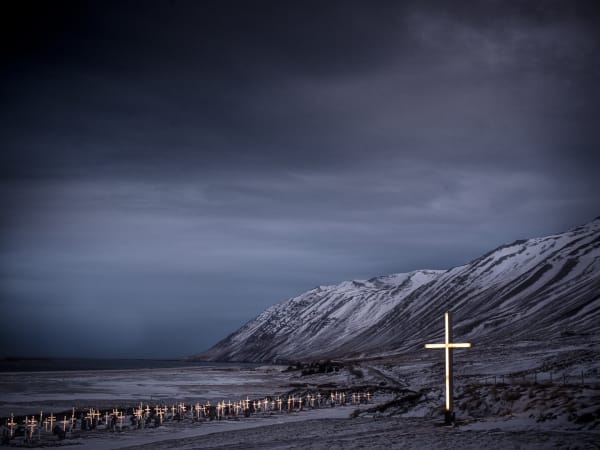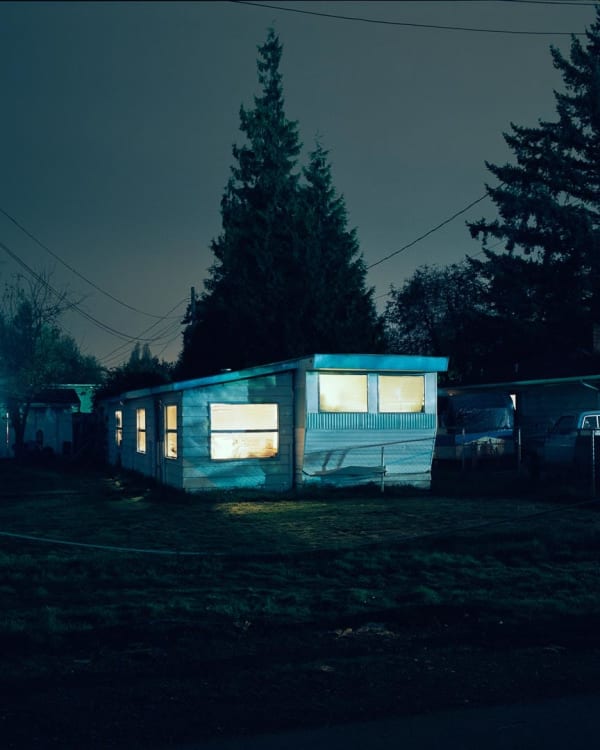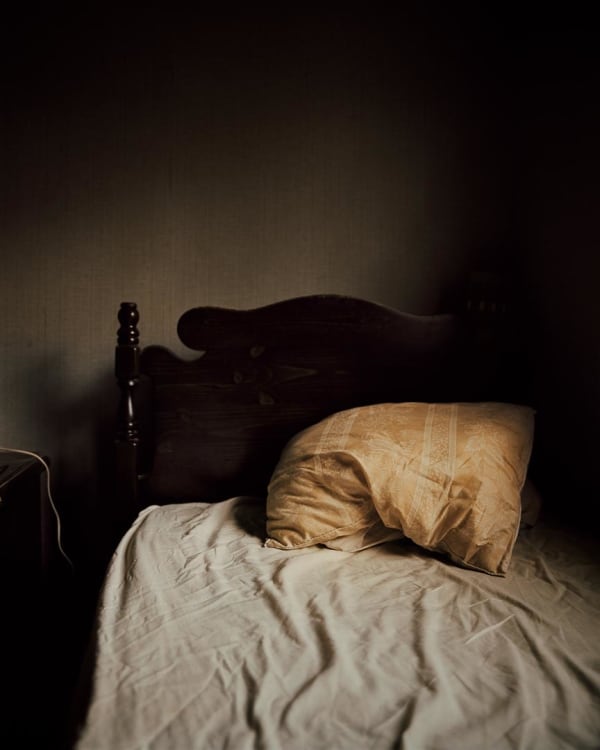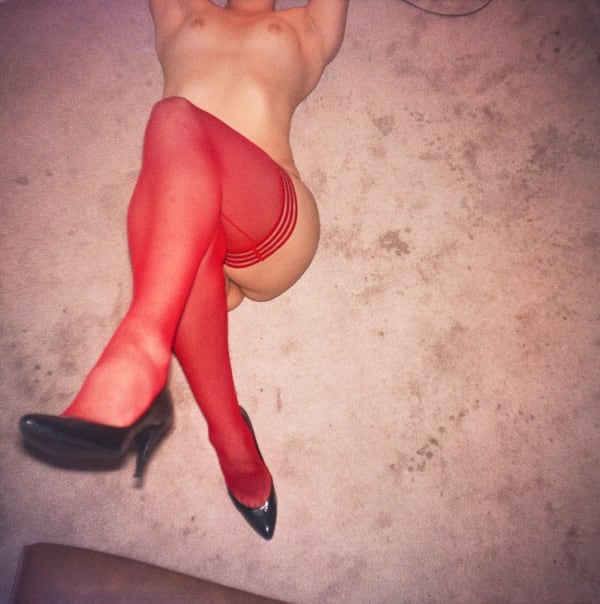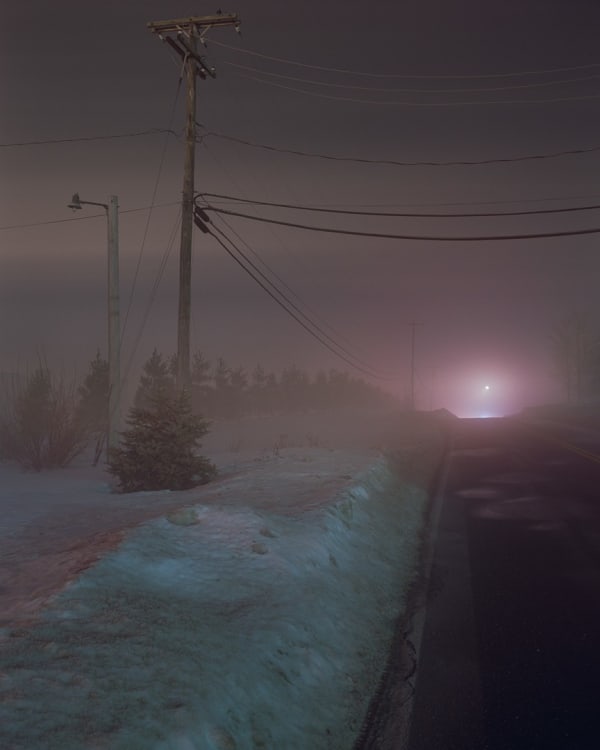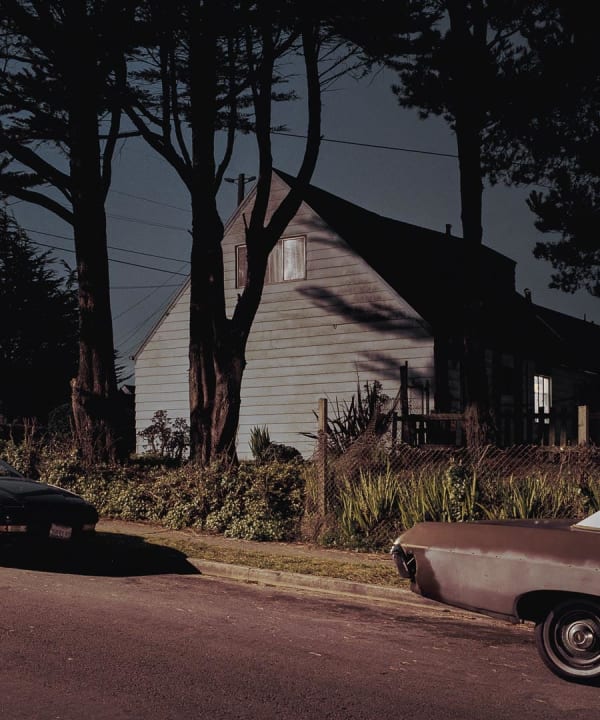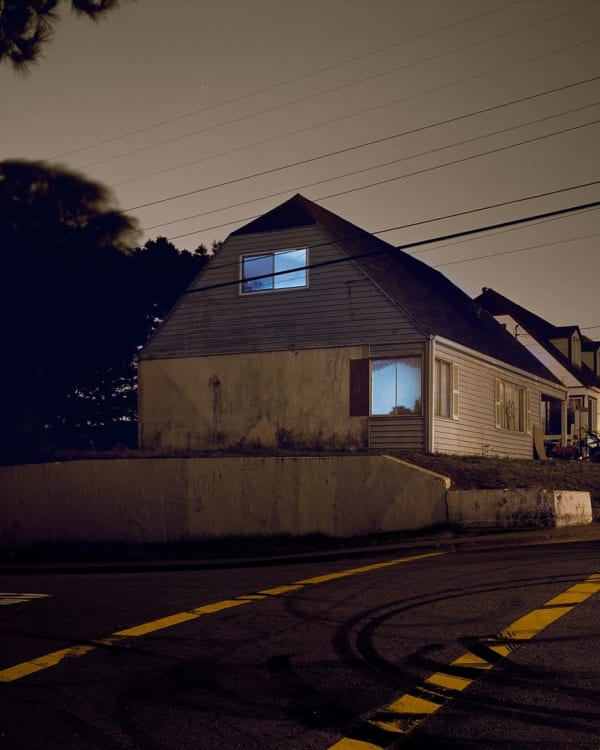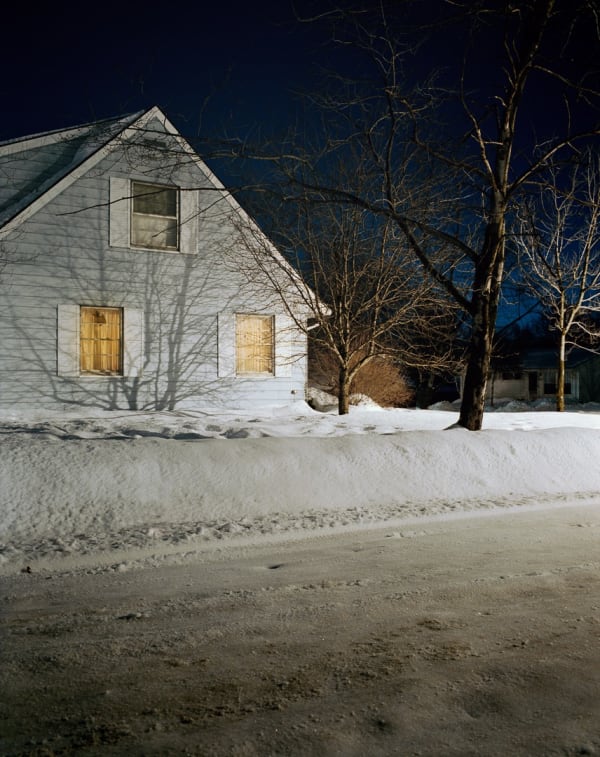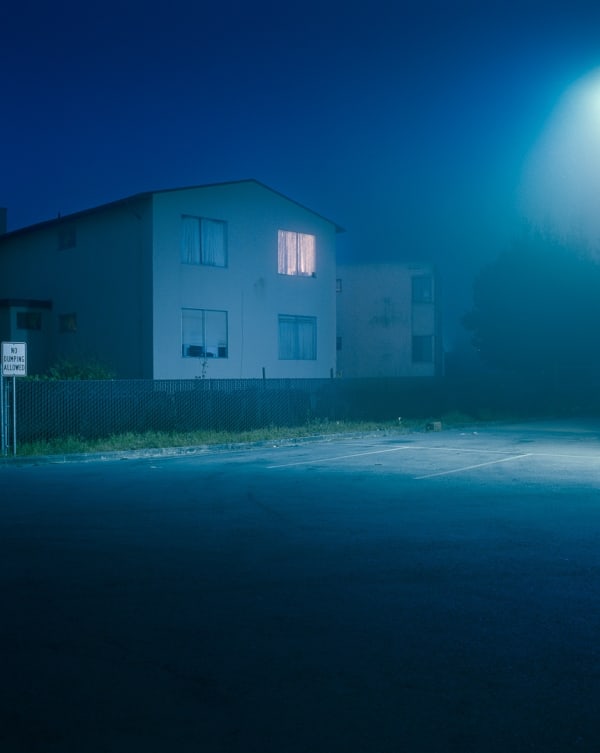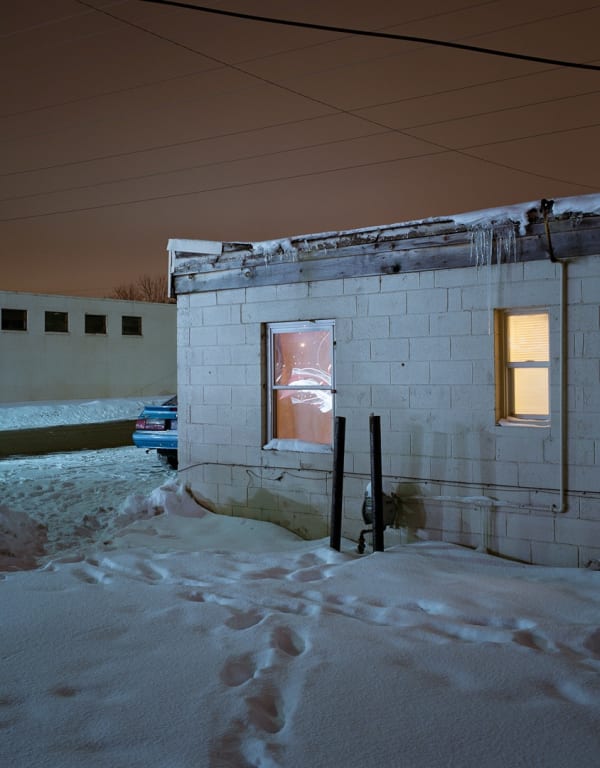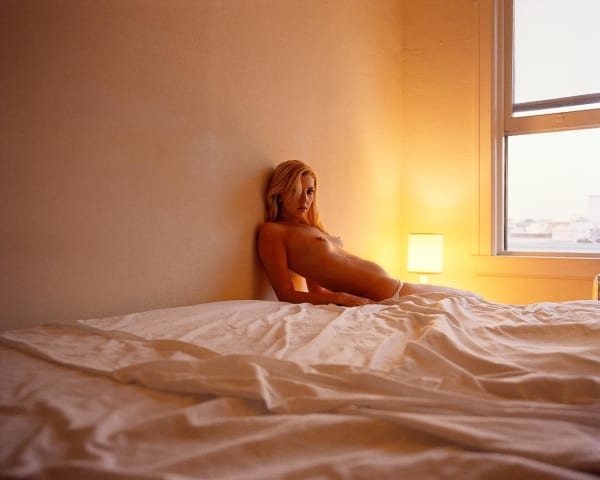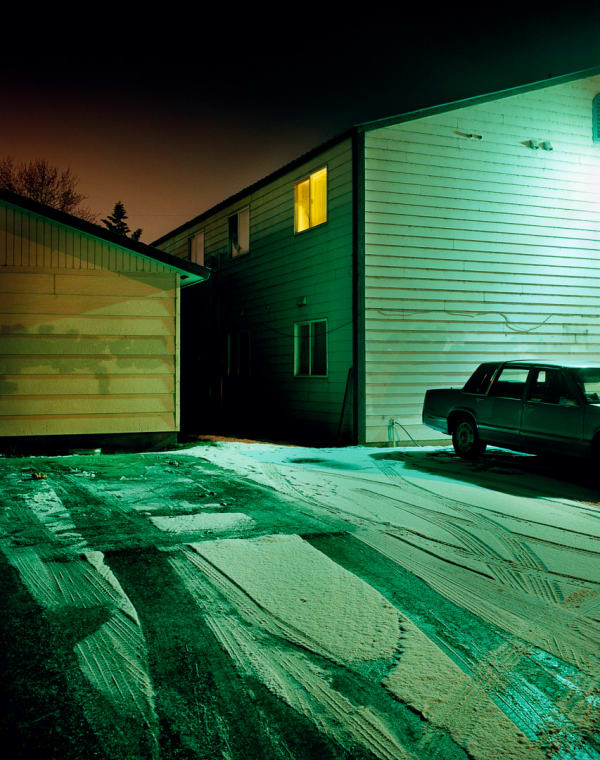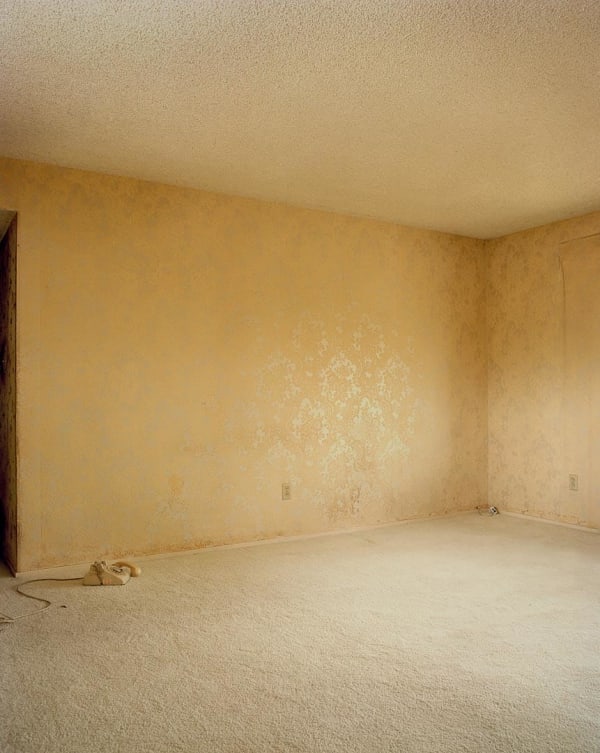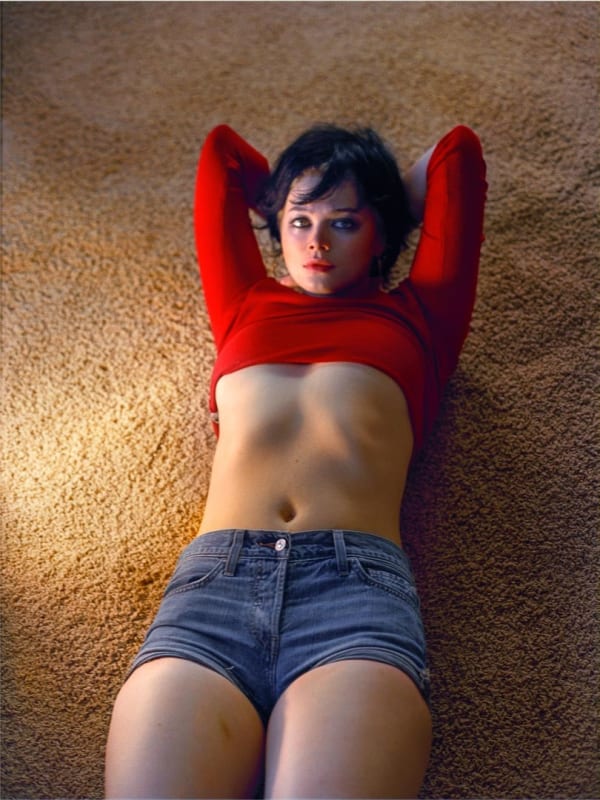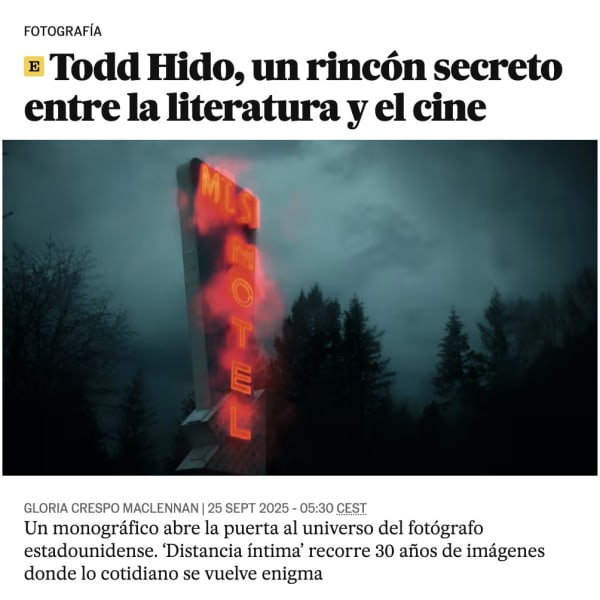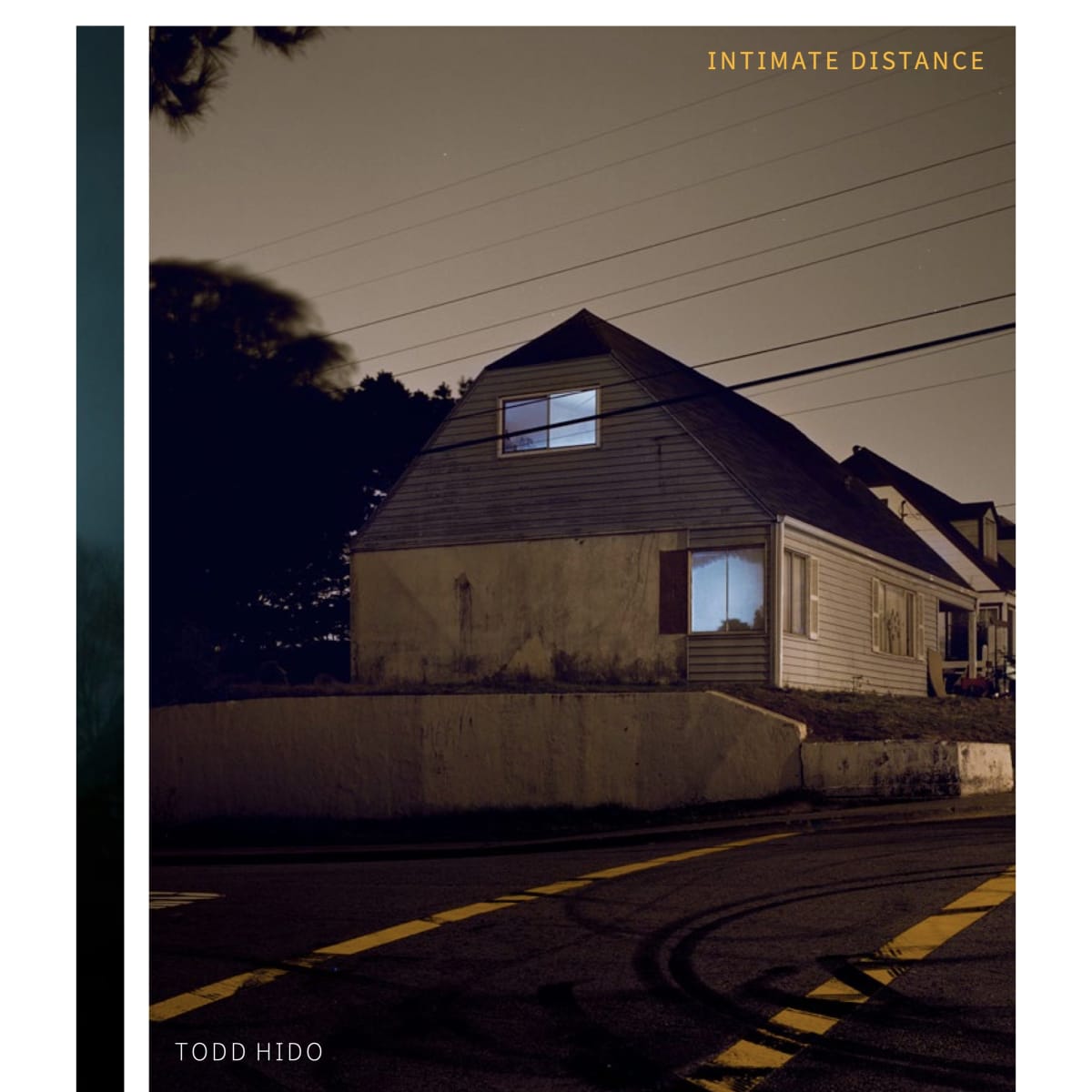Todd Hido American, b. 1968
Series
Works
-
 1447-a, 1994.
1447-a, 1994. -
 1601, 1995.
1601, 1995. -
 1941, 1996.
1941, 1996. -
 2027-a, 1997.
2027-a, 1997. -
 2424-a, 1997.
2424-a, 1997. -
 2133, 1998.
2133, 1998. -
 2122, 1998.
2122, 1998. -
 2154-a, 1998.
2154-a, 1998. -
 2256-a, 1999.
2256-a, 1999. -
 2312-a, 1999.
2312-a, 1999. -
 2421, 1999.
2421, 1999. -
 2522, 1999.
2522, 1999. -
 2319-b, 1999.
2319-b, 1999. -
 2611-a, 2000.
2611-a, 2000. -
 2632, 2000.
2632, 2000. -
 2653, 2000.
2653, 2000. -
 2676, 2000.
2676, 2000. -
 2810, 2001.
2810, 2001. -
 2844, 2001.
2844, 2001. -
 2904, 2001.
2904, 2001. -
 3114-b, 2002.
3114-b, 2002. -
 3737, 2005.
3737, 2005. -
 3680, 2005.
3680, 2005. -
 7373, 2008.
7373, 2008. -
 7851, 2008.
7851, 2008. -
 7987-a, 2008.
7987-a, 2008. -
 9243, 2010.
9243, 2010. -
 10132, 2011.
10132, 2011. -
 10473-b, 2011.
10473-b, 2011. -
 10488-a, 2011.
10488-a, 2011. -
 10715-7, 2011.
10715-7, 2011. -
 10733-43, 2011.
10733-43, 2011. -
 10096, 2011.
10096, 2011. -
 10106, 2011.
10106, 2011. -
 11250-09, 2014.
11250-09, 2014. -
 11506-3940, 2014.
11506-3940, 2014. -
 11682-5547, 2016.
11682-5547, 2016. -
 11799-3893, 2017.
11799-3893, 2017. -
 11797-3252, 2017.
11797-3252, 2017. -
 11805-5737, 2017.
11805-5737, 2017. -
 4124-c, 2018.
4124-c, 2018. -
 11857-5754, 2018.
11857-5754, 2018. -
 11940-3031, 2019.
11940-3031, 2019. -
 12005-4661, 2019.
12005-4661, 2019. -
 11927-6081, 2020.
11927-6081, 2020. -
 11927-6081, 2020.
11927-6081, 2020. -
 11929-6532, 2020.
11929-6532, 2020. -
 12011-5478, 2022.
12011-5478, 2022. -
 12044-4795, 2022.
12044-4795, 2022. -
 12161-1598, 2023.
12161-1598, 2023. -
 12187-295, 2024.
12187-295, 2024.
Fairs
Press
Newsletter
-

Alta celebrates its 4th birthday today, Thank you !
17 September 2025Today, marks exactly four years since Galeria Alta opened its doors with 'Vivian Maier, Black and White and Color'. Pancho Saula and Michelle Ferrara have...Read more -

Todd Hido Exhibition at Arles 2025: The Light From Within
Espace Van Gogh: 7 July - 5 October 2025 7 July 2025The Light from Within brings us a collection of work which locates and admires moments of quiet beauty in often bleak landscapes. Todd Hido is...Read more
Books
Biography
Todd Hido has solidified his position as one of the most influential contemporary American photographers, renowned for his atmospheric exploration of suburban and urban landscapes that blur the boundaries between documentary and fine art photography.
Over more than three decades of artistic practice, Hido has cultivated a distinctive visual language that transforms ordinary American environments into emotionally charged narratives, earning him international acclaim and securing his work within major museum collections worldwide. His photographs, characterized by their cinematic quality and evocative use of color and light, have not only reshaped the contemporary photography landscape but have also left indelible marks on popular culture, including Hollywood film productions and television series.
Artistic Development and Educational Foundation
Born on August 25, 1968, in Kent, Ohio, Todd Hido's formative experiences in the American Midwest profoundly influenced his artistic vision. His educational trajectory reflects a deep engagement with both traditional fine arts and avant-garde photographic practices.
After graduating from Theodore Roosevelt High School in 1986, Hido pursued a Bachelor of Fine Arts degree through a joint program between Tufts University in Medford, Massachusetts, and the School of the Museum of Fine Arts, Boston, which he completed in 1991. This dual institutional experience provided him with rigorous academic training and exposure to museum-quality artistic standards, laying the groundwork for his interdisciplinary approach.
Hido continued his education at the Rhode Island School of Design in Providence from 1991 to 1992, honing his technical skills and conceptual frameworks. He earned his Master of Fine Arts degree in 1996 at the California College of Arts and Crafts (now California College of the Arts) in Oakland, California, where he studied under the mentorship of photographer Larry Sultan. This relationship proved pivotal, as Sultan's exploration of domestic spaces and family narratives deeply influenced Hido's early work. However, Hido diverged by focusing on anonymous environments rather than personal family subjects, developing a methodology that combined documentary precision with poetic ambiguity.
Signature Style and Thematic Preoccupations
Hido's photographic practice is rooted in what he describes as long, solitary drives through American suburbs and urban peripheries, capturing images that resonate with both personal memory and collective experience. His breakthrough emerged serendipitously during nocturnal drives on the West Coast, where he began photographing houses illuminated by interior lights. These images, often depicting isolated structures shrouded in mist or rain, became the foundation for his seminal series House Hunting (2001). The series' haunting beauty lies in its ability to evoke narratives of absence and longing, transforming mundane architecture into metaphors for emotional isolation.
The photographer's aesthetic draws heavily from cinematic influences, particularly the works of Alfred Hitchcock and David Lynch, as well as the painterly compositions of Edward Hopper. His photographs replicate the aesthetic of film stills, creating open-ended stories that feel simultaneously familiar and unsettling. Hido frequently shoots during overcast conditions or through car windshields, techniques that add layers of atmospheric distortion and mystery. This approach, described by critics as "atmospheric photography," emphasizes environmental conditions as central to the emotional resonance of his work.
Major Bodies of Work and Publications
Hido has produced an extensive catalog of publications, with seventeen books to his name as of 2024. His photobooks are not merely collections of images but carefully sequenced narratives that reflect his evolving artistic vision. House Hunting (2001), published by Nazraeli Press, established his reputation with its exploration of suburban isolation. This was followed by companion works such as Outskirts (2002) and Roaming (2004), which expanded his investigation into the liminal spaces of American landscapes.
A thematic shift occurred with Between the Two (2006), which introduced female figures into his oeuvre, often depicted as nudes in dimly lit interiors. These images maintained Hido's signature atmospheric quality while venturing into more intimate psychological territory. His mid-career survey Intimate Distance (2016), published by Aperture, offered the first comprehensive overview of his work, chronologically organizing his series to reveal thematic continuity across decades.
In recent years, Hido has expanded his geographical scope beyond North America. Bright Black World (2018), his first major work shot outside the United States, features landscapes from Northern Europe and Japan. Influenced by Nordic mythology and the concept of Fimbulwinter (an endless winter preceding the apocalypse), the series presents a stark, environmental vision. His latest monograph, The End Sends Advance Warning (2024), continues this global perspective, with photographs from the Hawaiian Islands, the Bering Sea, and Arctic fjords. Despite its ominous title, Hido describes the work as an exploration of "hope and beauty in desperate times".
Museum Collections and Institutional Recognition
Hido's work has achieved extraordinary institutional recognition, with photographs held in over fifty public and private collections globally. Major institutions housing his work include the Guggenheim Museum, the Whitney Museum of American Art, the San Francisco Museum of Modern Art, the Los Angeles County Museum of Art, the Getty Center, and the Smithsonian Institution. International venues such as the Fotomuseum Winterthur in Switzerland and the Musée des Beaux-Arts in Le Locle have also acquired his pieces, underscoring his transnational appeal.
Pier 24 Photography in San Francisco holds the most comprehensive archive of his published works, a testament to his stature within the photographic community. Solo exhibitions at institutions like the Cleveland Museum of Art and the Kemper Museum of Contemporary Art have further cemented his legacy.
Contemporary Influence and Cultural Impact
Beyond the art world, Hido's visual language has permeated popular culture, influencing cinematic and television aesthetics. Directors such as Spike Jonze (Her), Sam Levinson (Euphoria), and Issa López (True Detective: Night Country) have drawn inspiration from his atmospheric compositions. Actor Jason Momoa featured Hido in his HBO Max documentary series On the Roam, highlighting his creative process alongside other artisans. This crossover underscores Hido's role in shaping contemporary visual storytelling, bridging fine art and mainstream media.
Hido's work has been profiled in leading publications including Artforum, The New York Times Magazine, and Vanity Fair, reinforcing his status as a critical voice in photography discourse. His ability to imbue ordinary scenes with narrative depth has made his images a reference point for discussions on suburban alienation and environmental unease.
Recent Work and Current Practice
Despite his global explorations, Hido remains based in the San Francisco Bay Area, where he serves as an adjunct professor at the California College of the Arts. His teaching philosophy emphasizes the interplay between technical mastery and emotional authenticity, mentoring emerging photographers while continuing his own artistic experiments.
Academic Career and Awards
Hido's academic tenure has paralleled his artistic success. Since joining the California College of the Arts in the late 1990s, he has influenced generations of photographers through workshops and lectures. His pedagogical approach stresses the importance of personal narrative and environmental immersion, encouraging students to "photograph what haunts them".
His contributions have been recognized with numerous awards, including the Eureka Fellowship, the Fleishhacker Foundation Grant, and the Barclay Simpson Award. These accolades reflect both his artistic excellence and his commitment to fostering photographic education.
Conclusion
Todd Hido's career exemplifies a relentless interrogation of place and memory, transforming the mundane into the metaphysical. From his early nocturnal explorations of suburban homes to his recent global environmental studies, his work consistently reveals the emotional undercurrents of human habitation. As climate anxiety and technological isolation define the 21st century, Hido's photographs serve as both mirror and prophecy, capturing the beauty and unease of contemporary existence.
His influence across artistic and popular realms underscores photography's enduring power to shape cultural narratives. With recent projects expanding his thematic and geographical scope, Hido continues to challenge photographic conventions, proving that even in an age of digital saturation, the still image retains its capacity to astonish and unsettle. As he enters his fourth decade of practice, Hido remains a vital force in contemporary photography, his lens now fixed on a world teetering between decay and renewal.


